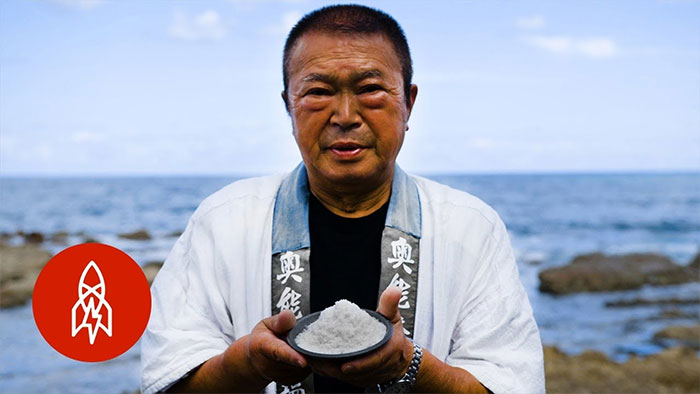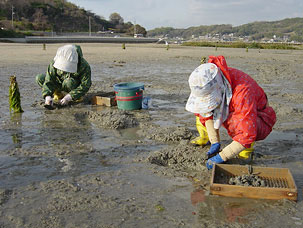Discover the unique technique of making Agehama salt
Agehama salt making technology has a history of more than 400 years, only exists on the Noto peninsula, Japan.
Not only has the beautiful natural landscape, the Noto Peninsula of Japan also possesses a specialty that no other place has. It is edible salt made by the traditional Agehama method.
Agehama salt making technology has existed in the Noto peninsula for over 400 years.
Mr. Ryoichi Toya has been working in this salt making business for 23 years. Currently he produces about 3, 5 tons of salt each year.

Mr. Ryoichi Toya has been working in this salt making business for 23 years.
Mr. Ryoichi Toya said: 'People say that people living by the sea are blessed with treasures. I'm Ryoichi Toya and I make salt in the Agehama style. Agehama salt making technique exists only here on the Noto peninsula. Agehama has a history of more than 400 years. I've been doing it for 23 years. '
Salt makers usually start at 4:30.
Mr. Ryoichi Toya shared: 'To make Agehama salt, we first irrigate seawater into sand fields of about 330 m2. I carried 70 liters of water each time and did this job 19 times for each batch of salt. Every 1.2 tons of seawater will make 120kg of salt '.
When the sand in the field was drained, the farmers made outstanding salt into wooden crates and continued to pour seawater. They then filtered the water and boiled it in a large pot until the water evaporated, leaving only the crystallized salt particles. The mixture was boiled for 6 hours, and it took a week of labor to fill this 600 liter pot with salt.

To make Agehama salt, workers take seawater to irrigate the sand fields about 330m 2 wide .
'I usually sleep next to me during cooking. This salt is mainly used for food, ' Ryoichi added.
The sand is high in iron, so the salts made with Agehama method are rich in minerals and often used to prepare dishes . It has a moderate salty taste, fine grain and is a great spice for rice balls.

Salt made of Agehama method is rich in minerals.
Demand for Agehama salt in Japan is increasing. Mr. Ryoichi Toya currently has two production facilities and aims to supply the market from 10 to 12 tons of salt per year.
'Many children come here and I teach them how to make salt. I told them that salt is a treasure from the sea, ' Mr. Ryoichi excitedly shared.
For him and many other salt farmers, salt was an invaluable treasure that nature bestowed on the residents of Noto Island.
- Little things to know about salt
- The culprit made the
- Black salt processing into high-quality industrial salt
- Sell salt produced from tears
- Scientific tips with table salt
- How to make pure white salt without scum, crispy delicious standard science
- Spray salt into the sky to prevent storms
- Things you don't know about Himalayan pink salt
- Eating too little salt is also harmful to health
- Technology causes cancer cells to destroy themselves
- The secret to mummification is unique in the Philippines
- Brilliant wild salt lake in Crimea
 'Fine laughs' - Scary and painful torture in ancient times
'Fine laughs' - Scary and painful torture in ancient times The sequence of numbers 142857 of the Egyptian pyramids is known as the strangest number in the world - Why?
The sequence of numbers 142857 of the Egyptian pyramids is known as the strangest number in the world - Why? History of the iron
History of the iron What is alum?
What is alum? Benefits of Salt Coffee - A Favorite Drink of Many Young People
Benefits of Salt Coffee - A Favorite Drink of Many Young People  People who eat too much salt will have these 5 symptoms, quickly adjust before illness strikes.
People who eat too much salt will have these 5 symptoms, quickly adjust before illness strikes.  The snow-white mountain stands tall in the middle of the green plain: Unexpectedly, it is a giant garbage dump!
The snow-white mountain stands tall in the middle of the green plain: Unexpectedly, it is a giant garbage dump!  'Smiley Face' Could Solve Mars' Big Mystery
'Smiley Face' Could Solve Mars' Big Mystery  Admire the unique cluster of salt domes in the world
Admire the unique cluster of salt domes in the world  Strange patterns on the world's largest salt flat
Strange patterns on the world's largest salt flat 